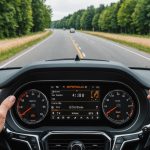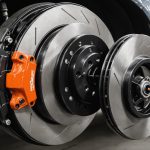Enhancing Your Ride with a Digital Dashboard Upgrade: Vital Safety Guidelines
In the era of advanced automotive technology, upgrading to a digital dashboard is not just about aesthetics or convenience; it’s also a significant step towards enhancing vehicle safety. Here’s a comprehensive guide to help you navigate the process and ensure your new digital dashboard meets the highest safety standards.
Understanding the Benefits of Digital Dashboards
Digital dashboards are more than just sleek, modern displays; they are hubs for vital data that can significantly improve your driving experience and safety. Here are some key benefits:
Also read : Must-know safety guidelines for cars featuring panoramic sunroofs: protect yourself and your passengers
Real-Time Data and Alerts
Digital dashboards provide real-time speed data, navigation information, fuel efficiency metrics, and maintenance alerts. These features are crucial for keeping you informed and safe on the road. For instance, systems like Ford’s SYNC allow drivers to monitor fuel efficiency and maintenance schedules directly from the digital display, ensuring you stay on top of your vehicle’s health[1].
Customization and Personalization
Younger generations are particularly keen on customizable dashboards, which offer personalized driving experiences. Companies like Tesla provide fully customizable digital displays, allowing drivers to adjust layouts, colors, and functionalities to their liking. This personalization enhances user experience and can be tailored to meet individual safety needs[1].
Have you seen this : Enhance your car’s safety: an essential guide to optimizing your automatic emergency braking system
Integration with Advanced Driver Assistance Systems (ADAS)
Digital dashboards are often integrated with ADAS, which include features like lane departure warnings, collision alerts, and driver fatigue monitoring. These systems rely on intuitive, easy-to-read digital displays to relay crucial data in real-time, significantly enhancing driver awareness and road safety[1].
Compliance with Safety Regulations
Government safety regulations play a critical role in the adoption and integration of digital dashboards. Here’s how these regulations impact your upgrade:
Mandatory Digital Displays
Regulations in countries like the USA and the EU mandate the use of digital displays to improve driver awareness. For example, the European Union’s vehicle safety regulations require digital displays to provide real-time speed data and alerts, helping drivers stay within speed limits and reducing the likelihood of accidents[1].
Driver Monitoring and Safety
Safety regulations are also focusing on enhanced driver monitoring. Laws require vehicles to include systems that track driver behavior, such as fatigue or distraction monitoring. Digital dashboards are integrated with these systems to alert drivers when they exceed safe speed limits or need a break, promoting safer driving habits. Major automakers like Volvo and Mercedes-Benz are leading the way in meeting these regulatory standards[1].
Best Practices for Installing and Using Digital Dashboards
To ensure your digital dashboard upgrade is both safe and effective, follow these best practices:
Proper Installation
Ensure that your digital dashboard is installed correctly to avoid any obstructions or distractions. For example, dash cams, which are often part of digital dashboard systems, must be mounted in a way that does not block the driver’s view. State laws vary, but generally, dash cams should be placed in the lower corners of the windshield or behind the rearview mirror[3].
Configuration and Customization
Configure your digital dashboard settings to meet your specific needs. For instance, the Samsara Dual-Facing AI Dash Cam allows you to customize event detection settings, such as the speed threshold for distracted driving alerts. You can set alerts to receive notifications via email or SMS when a distracted driving event occurs[2].
Regular Updates and Maintenance
Keep your digital dashboard software up-to-date. Cloud-based updates and smartphone integration allow for remote diagnostics and performance tracking, making your digital dashboard more versatile and user-friendly. Regular maintenance, such as ensuring the windshield is free from obstructions, is also crucial for the proper functioning of these systems[1][4].
Managing Distracted Driving with Digital Dashboards
Distracted driving is a significant risk on the roads, and digital dashboards can play a crucial role in mitigating this risk.
Distracted Driving Detection
Systems like the Samsara Dual-Facing AI Dash Cam use inward-facing cameras and AI to detect distracted driving events. These systems can detect abnormal driver behavior, such as eating, texting, or adjusting the radio, and issue in-cab audio alerts to notify drivers to keep their eyes on the road[2].
Setting Alerts and Thresholds
Customize your distracted driving detection settings to optimize its use. For example, you can set the speed threshold for distracted driving alerts, configure in-cab audio alerts, and receive email or SMS notifications when an event occurs. Here is a detailed list of settings you might consider:
- Speed Threshold: Set the minimum speed at which the system detects distracted driving events (e.g., 0 mph, 10 mph, 25 mph, or 35 mph).
- Inattentive Driving: Detects abnormal driver behavior indicating inattention, such as drivers eating or texting.
- Mobile Usage: Detects phone usage, including when drivers hold a phone to their ear without lowering their head.
- Event Upload: Configure the maximum number of events per driver per day that are uploaded to the Safety Inbox[2].
Ensuring Data Protection and Privacy
As digital dashboards collect and process a significant amount of data, ensuring data protection and privacy is paramount.
Compliance with State Laws
Be aware of state-specific laws regarding dash cam use and data recording. For instance, federal law requires one-party consent for audio recording, but many states require consent from all parties involved. Inform passengers about video or audio recording to comply with privacy laws[3].
Secure Data Storage
Ensure that the data collected by your digital dashboard is stored securely. Cloud-based storage solutions should adhere to strict data protection standards to prevent unauthorized access and breaches.
Real-World Examples and Success Stories
Several automakers and technology companies are leading the way in integrating digital dashboards with safety features.
Ford’s Driver Alert System
Ford’s Driver Alert System is a prime example of how digital dashboards can enhance safety. This system monitors the driver’s level of alertness based on driving behavior and issues audible and visual warnings if the driver appears fatigued. The system can be enabled or disabled through the vehicle’s SYNC screen, and it remembers the setting through ignition cycles[4].
Tesla’s Customizable Displays
Tesla’s fully customizable digital displays allow drivers to personalize their driving experience while ensuring safety. These displays integrate with various safety features, including ADAS, to provide a seamless and safe driving experience[1].
Upgrading to a digital dashboard is a significant step towards enhancing your vehicle’s safety and functionality. By understanding the benefits, complying with safety regulations, following best practices, managing distracted driving, and ensuring data protection, you can make the most out of your new digital dashboard.
Here is a comprehensive table summarizing some key points to consider when upgrading to a digital dashboard:
| Feature | Description | Benefits | Best Practices |
|---|---|---|---|
| Real-Time Data | Provides real-time speed data, navigation, fuel efficiency, and maintenance alerts. | Enhances driver awareness and safety. | Ensure proper installation and configuration. |
| Customization | Allows personalization of display layouts, colors, and functionalities. | Enhances user experience and safety. | Customize settings according to individual needs. |
| ADAS Integration | Integrates with advanced driver assistance systems like lane departure warnings and collision alerts. | Significantly enhances driver awareness and road safety. | Ensure compliance with safety regulations. |
| Distracted Driving Detection | Detects abnormal driver behavior and issues alerts. | Mitigates the risk of distracted driving. | Customize detection settings and thresholds. |
| Data Protection | Ensures secure storage and compliance with privacy laws. | Protects sensitive data and maintains privacy. | Be aware of state-specific laws and ensure secure data storage. |
In conclusion, a digital dashboard upgrade is not just a technological advancement but a critical step in enhancing vehicle safety. By following these guidelines and best practices, you can ensure a safe, informed, and personalized driving experience.
Additional Resources
For more detailed information on specific topics:
- Dash Cam Laws By State: A comprehensive guide to state-specific regulations regarding dash cam use[3].
- Distracted Driving Detection: Best practices and settings for optimizing distracted driving detection systems[2].
- Ford’s Driver Alert System: Detailed instructions on how to use and configure Ford’s Driver Alert System[4].
By leveraging these resources and adhering to the guidelines outlined above, you can make the most out of your digital dashboard upgrade and drive safer, smarter, and more informed.











